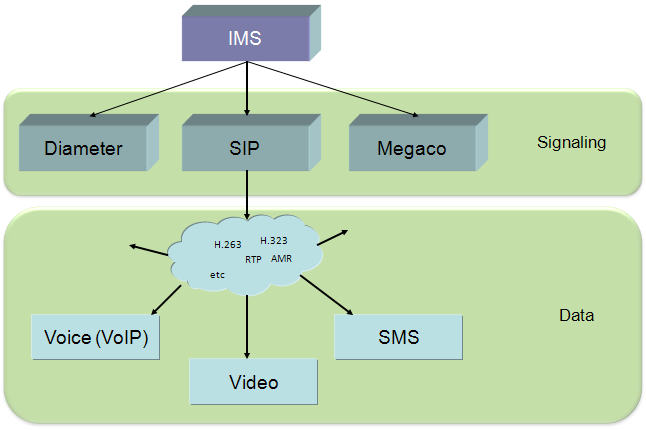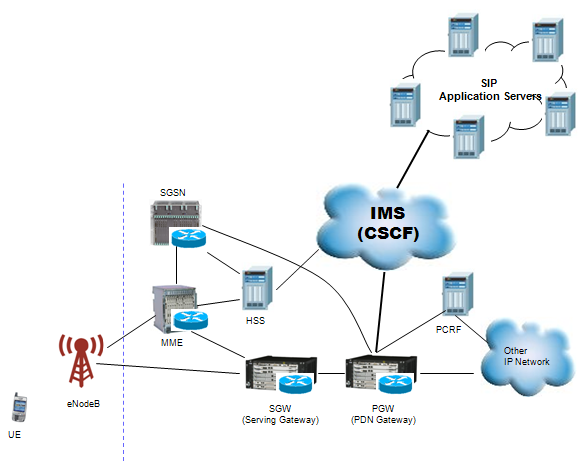|
|
||
|
IMS (IP Multimedia Subsystem) is one of the terms that I heard most often since I started studying LTE. But this is one of the terms which is still not clear to me -:). This post is to share my understanding as of now (?) with readers and I will try to put information based on my hands-on experience rather than directly coming from the specification. There may be some part which may not be 100% accurate from the real expert's point of view. I think I keep updating this page very often and very long. As usual, the first thing I did to know something about IMS when I first heard of it, I put "IMS" in Google and as you may experienced I got a lot of different kind IMS -:). Then I put "LTE IMS" and got pretty much of the result being more relevent to my interest. But I saw from the searched link a lot of material about SIP. Reading through these links, I start asking myself.. "Hmm... Is IMS same as SIP ?". And then I started search "SIP" in Google. Of course, a lot of result about SIP popped up but I also got almost same amout of the searched result was about "VoIP". Then I asked myself "Hmm... Is SIP as same as VoIP ?". With the application of transition rule, I thought "Then... Is IMS same as VoIP ?". It took long time for me to get out of this confusion. The latest version of my understanding about the relationship among IMS, SIP, VoIP is as follows ( I think there should be many other arrows in/out of IMS block). As you see, IMS is sitting on top of everything and it control/use SIP for the various media transfer. Now let's think about SIP (Session Initiation Protocol). As the name implies, SIP is a kind of signaling protocol which mainly involved in "Initiation" and "Closing" of a media transfer. Once a session is initiated, some other protocols kick in the process to transfer the data part of the media. The specific type of prtocol is determined by the type of media data. This image shown above illustrates a simplified overview of the IMS (IP Multimedia Subsystem) and its associated protocols, which are used for delivering multimedia and voice communication services over IP networks.
Below the high layer signaling is the types of data that can be transmitted within an IMS using the above signaling protocols:
Now let's think about how these IMS chain get involved in LTE SAE structure and I think just one diagram as shown below is good enough for a big picture. This illustration shown above depicts the architecture of a mobile network that integrates 4G technologies, as well as the IP Multimedia Subsystem (IMS) for delivering multimedia services. It illustrates how these components work together to manage signaling, data routing, and service delivery in a modern telecommunications network.
Some Video TutorialsFirst, if you are a real beginner for IMS and SIP. I recommend you to see the following video a couple of times and it will give you pretty good big pictures. |
||

